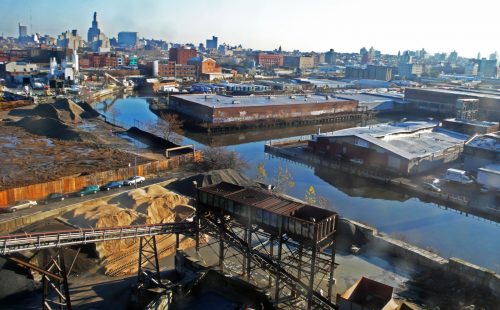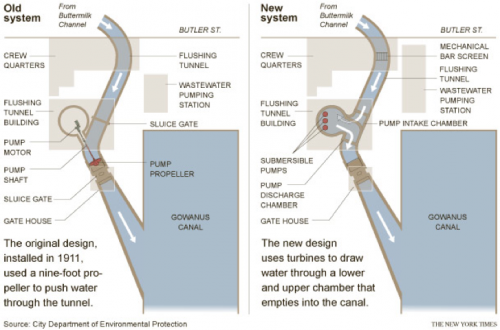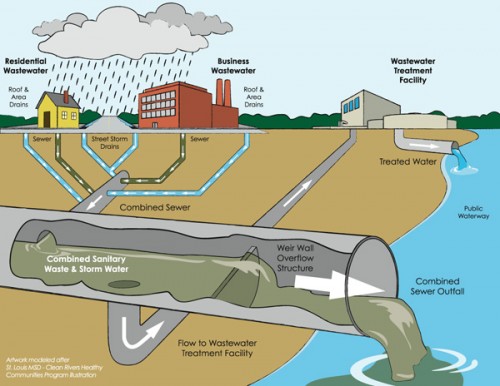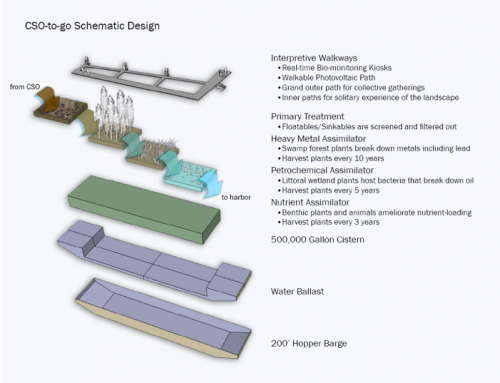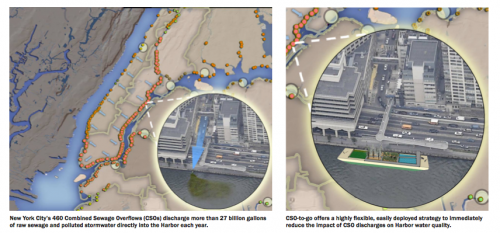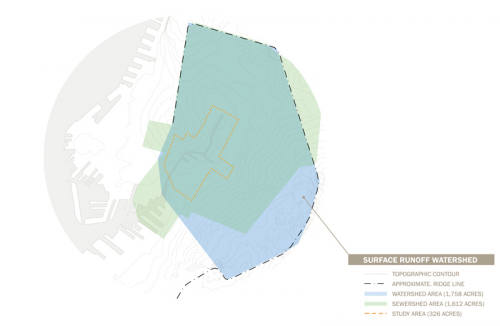Before New York City as we know it today existed, the Gowanus was a tidal wetlands and stream ecosystem. In the 1860s, the area was dredged to become the Gowanus Canal, a major route for oil refineries, tanneries, chemical plants, manufactured-gas plants and other heavy industries who settled along the canal’s banks. These factories dumped wastes and leached pollutants like PCB’s and heavy metals into the water, putrefying it into a lifeless sludge.
By the 1960s much of these industries had left the area. Now the Gowanus’ is surrounded by residential neighborhoods like Carroll Gardens, Red Hook, and Park Slope. Despite industry’s absence, the water has remained so toxic that the US Environmental Protection Agency has declared it a Superfund site.
Though there have been efforts to clean the canal, we have not progressed far enough. In 1911, The Gowanus Flushing Tunnel was installed. This tunnel, in an attempt to get rid of the canal’s powerful stench, flushed its dirty water into the Buttermilk Channel. Alas this effort made little to no difference. In 1999, the water flow was reversed so that clean water from the Buttermilk Channel would be pumped into the Gowanus. The idea was to add oxygenated water to the canal to eliminate the anaerobic bacterias which cause the bad odor.
Today the odor has waned; though you can still get an unpleasant stench after a rainfall. Still the water remains contaminated. It is reported that the air around the canal is “acceptable” in terms of contamination standards. People have the right to use the canal for canoeing and such, but the EPA strongly warns against swimming in it or eating fish from the canal. Of course, “acceptable” is not good enough for those of us living near the canal.
The canal continues to be polluted today by toxins that are still leaching from the former industrial sites, street surface runoff, and combined sewage outflows (CSOs). CSOs are the city’s solution to flooding. When a rain is so heavy that a water treatment center cannot support the inflow of water, it will release a combination of raw sewage and rainwater into the ocean. (Watch a video)
Landscape architects and designers have proposed numerous ideas for how we can creatively rehabilitate the Gowanus Canal. “CSO-to-Go,” developed by Local Office Landscape Architecture, is one such design. The architects recognized that New York City’s waterfront property is too expensive to purchase for a city-funded project and worked their design around that reality. Their solution was a portable barge that would house a series of phytoremediation tanks. Each tank would hold plants that absorb specific contaminants like heavy metals, petrochemicals, and excess nutrients out of the water. The barge could be parked directly at the outflow point of the CSO; that way the dirty water is caught and treated before entering the ocean.
The barge could be moved to various other outflow points around the city. Residents and tourists could visit the site to learn more about the problem and the process of cleaning it up. They would even be able to monitor the pollution levels at each tank to see how well the phytoremediating plants are working.
“CSO-to-Go” and related projects have yet to be implemented as they lack the funding needed. We hope the city of New York and the EPA continue to make strides in cleaning up the Gowanus Canal, but until then there are a few things that those of us living in the Gowanus’ watershed (the area of land that eventually drains its water into the Gowanus– see image below) can do.
By reducing our water consumption across the board, we can mitigate how much water we are putting into the sewer system. We can do this by installing low-flow faucets and shower heads, using native plants that require less intensive watering, and by making a conscious effort to reduce the amount of water we use on a daily basis. Also by creating more green spaces in our city, we can provide storm water with a place to infiltrate instead of washing over pavement and into the sewer system (see “Bioswale Basics“). This could be done by installing more garden space in your backyard or a green roof.
As an NY green contractor and landscape designer, Eco Brooklyn can help you find ways to reduce your water consumption in your home and increase your permeable surfaces/green spaces in your yard. Please contact us to learn more about how you can help protect the Gowanus!
By: Malone Matson

